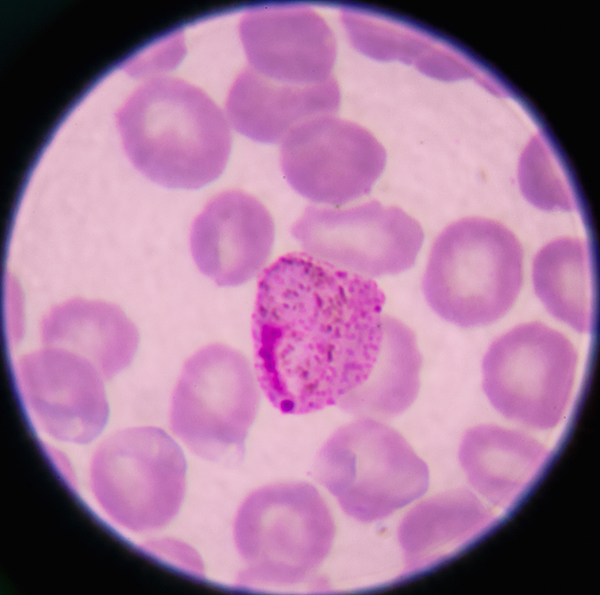FRIDAY, June 17, 2016 (HealthDay News) — The Zika virus is spreading fast through Puerto Rico, placing hundreds of pregnant women at risk for delivering babies with the devastating birth defect known as microcephaly, the U.S. Centers for Disease Control and Prevention said Friday.
Testing of blood donations in Puerto Rico — “our most accurate real-time leading indicator of Zika activity” — show that more and more people in the U.S. island territory have been infected with the mosquito-borne virus, CDC Director Dr. Tom Frieden said during a media briefing.
“Based on the best information available, Zika infections appear to be increasing rapidly in Puerto Rico,” Frieden said.
“The real importance of this information is that in coming months it’s possible that thousands of pregnant women in Puerto Rico could become infected with Zika,” he stressed. “This could lead to dozens or hundreds of infants being born with microcephaly in the coming year.”
In microcephaly, a newborn’s head is smaller than normal, with the potential for long-term neurological damage.
Blood centers in Puerto Rico began testing donations for Zika on April 3, using an experimental test made by New Jersey-based Roche Molecular Systems Inc., according to the CDC.
For weeks now, the percentage of blood donations testing positive for Zika has been increasing in Puerto Rico, reaching as high as 1.1 percent for the latest week of reporting, June 5-11, the CDC’s Morbidity and Mortality Weekly Report indicates.
Only one in every five people infected with Zika develops any symptoms, making the virus very difficult to track.
Prior outbreaks of other tropical viruses have shown that blood donations can provide an accurate reflection of infections in the general population, Frieden explained.
Basically, every Zika infection detected in a relatively small proportion of blood donors can reflect hidden infections in a substantial percentage of the general public throughout the course of an epidemic season, the CDC report said.
“The concern here is when we translate that into an exposure over multiple months, it is many times that 1 percent rate,” Frieden explained. “That’s why we’re so concerned about protecting pregnant women.”
Zika has been tied to thousands of cases — mainly in Brazil — of microcephaly. It is typically transmitted via the bite of the Aedes aegypti mosquito.
“Controlling this mosquito is very difficult,” Frieden said. “It takes an entire community working together to protect a pregnant woman.”
Because the virus remains largely undetected, it will be months before affected babies begin to be born, Frieden said. Some will have microcephaly or other brain-related birth defects. But many will appear healthy and normal, and there’s no way to know how they might have been affected, he added.
“We simply don’t know, and may not know for years, if there will be long-term consequences on brain development,” Frieden said.
Zika can be transmitted via blood donation, but to date there have been no reported cases of this happening either in the United States or any of its territories, said Dr. Matthew Kuehnert, director of the CDC’s Office of Blood, Organ and Other Tissue Safety.
“Through the interventions we have in place, the blood supply is being protected in Puerto Rico,” Kuehnert added.
A total of 68 blood donations have come back positive for Zika out of 12,777 tested, the CDC said. All Zika-tainted donations are removed from the blood supply.
Plans are in place to implement the Roche test at blood banks in the continental United States if Zika virus starts to spread locally, Kuehnert said.
No places in the continental United States currently have local transmission of Zika, the CDC said. But one blood bank, the Gulf Coast Regional Blood Center in Houston, has already started screening donations for Zika under the FDA’s investigational approval for the Roche test.
Mosquito bites remain the typical way Zika is spread, but transmission of the virus through sex is more common than previously thought, World Health Organizations officials have said.
The CDC has said it expects to see Zika infections in Gulf Coast states like Florida, Louisiana and Texas and mosquito season heats up.
Women of child-bearing age who live in an active Zika region should protect themselves from mosquitoes by wearing long-sleeved shirts and long pants, using mosquito repellent when outside, and staying indoors as much as possible, according to the CDC.
President Barack Obama has asked Congress to allocate $1.9 billion to combat the Zika threat, but lawmakers have yet to agree on a spending package.
More information
Visit the U.S. Centers for Disease Control and Prevention for more on the Zika virus.
This Q&A will tell you what you need to know about Zika.
To see the CDC list of sites where Zika virus is active and may pose a threat to pregnant women, click here.
Copyright © 2025 HealthDay. All rights reserved.

